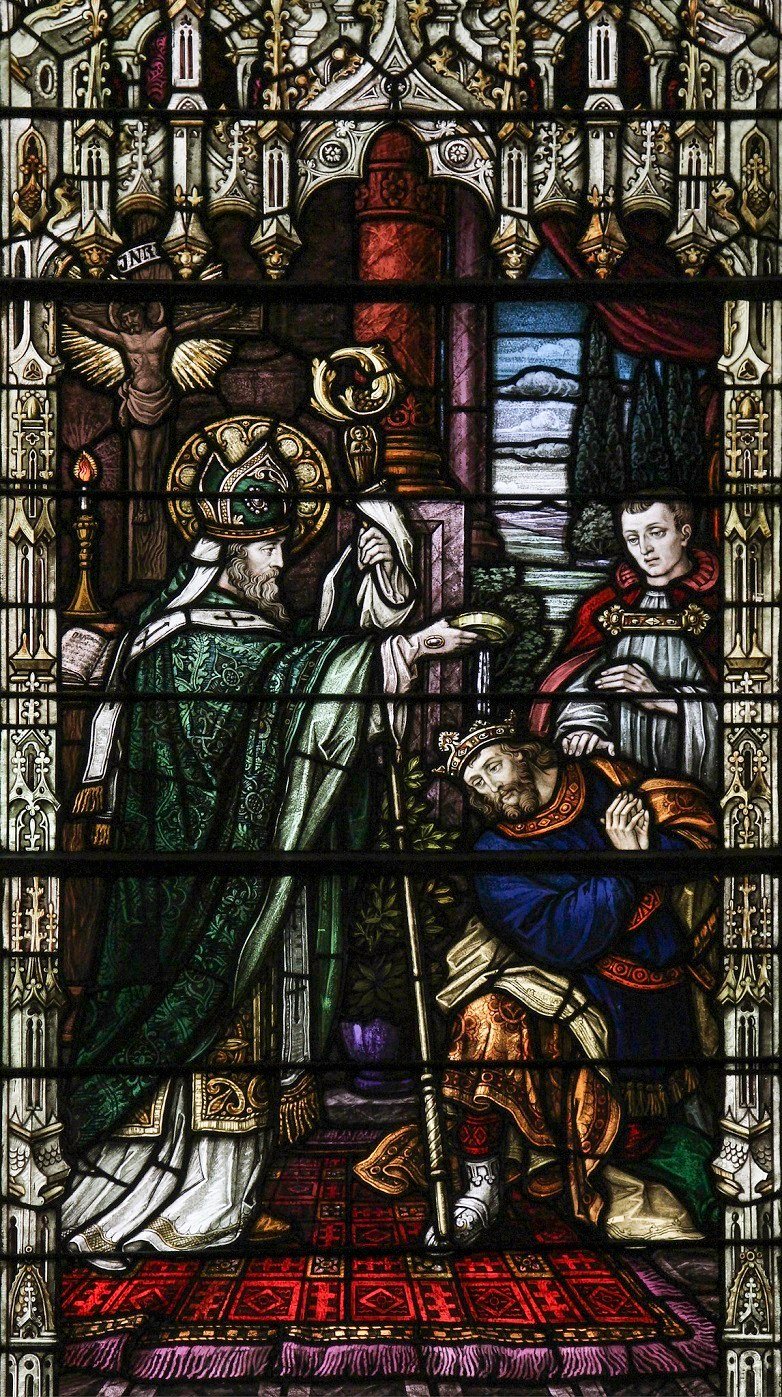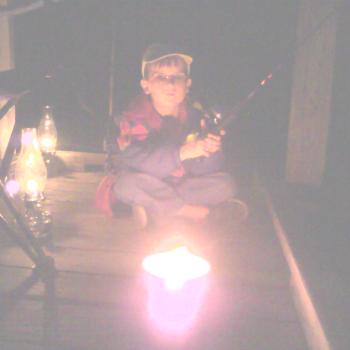AndThese days, we’re learning that not all of our heroes were heroic. What can we learn from the life and faith of St. Patrick? It’s time to start rethinking Saint Patrick, and how it’s not nice to Christianize a nation.

Wearing the Green
This week many people celebrate one of my favorite holidays, St. Patrick’s Day. For me, It’s a day to remember my Irish heritage and celebrate Ireland’s contributions to society. Click here for Thomas Cahill’s book, How the Irish Saved Civilization: The Untold Story of Ireland’s Heroic Role from the Fall of Rome to the Rise of Medieval Europe. Though I’m not a fan of green beer, I like a good pinch as well as the next guy. I love Irish music and look forward to St. Patrick’s Day every year. I’ll definitely be wearing the green!
Rethinking Saint Patrick
Yet, these days, I think differently about Patrick’s story than I used to. As an Exvangelical, at one time I was impressed with Patrick’s sense of mission. The young Romanized Welshman was enslaved by the Irish, only to escape from his captors to return home. After receiving his theological education, he followed what he believed to be God’s call to evangelize the very people who had enslaved him. He sailed back to Ireland, converting pagans and establishing monasteries all around the country. By the time of his death, much of Ireland had been converted to Christianity. In many ways, Patrick adopted the Celtic spirituality of the very people he sought to save from paganism. I’m not sure whether this means he was open to learning from his enemies, or whether he’s guilty of cultural appropriation. Maybe a little of both
In a day when we’re rethinking many of Western society’s heroes, it’s appropriate to take a look at Patrick. In elementary school, I learned that men like Columbus and Cortez were explorers and heroes. Today, I understand that they were murderers, rapists, and guilty of genocide. In the light of this fresh perspective, how it’s important to rethink Saint Patrick. As an Evangelical, I thought it was great that he Christianized a pagan nation. Today, I’m not so sure.
Shamrocks and Snakes
Purportedly, Patrick used the three-leafed Shamrock to explain the nature of the Trinity to the Irish people. Patrick is credited with having cast the snakes out of Ireland. In fact, there likely were never snakes in Ireland. Patrick, however, did drive the Druids out of Ireland and put an end to the human sacrifice they practiced. Ending human sacrifice is a good thing—but demonizing your enemies is not. In his famous prayer, “The Breastplate of St. Patrick,” or, “Cry of the Deer,” we see two things. First, we see Patrick’s nature-centered and magical worldview that he adopted from the Druids. But then, we see the enmity he felt towards them, and his need for protection from them.
The Breastplate of St. Patrick
I arise today
Through a mighty strength, the invocation of the Trinity,
Through belief in the Threeness,
Through confession of the Oneness
of the Creator of creation.
I arise today
Through the strength of Christ’s birth with His baptism,
Through the strength of His crucifixion with His burial,
Through the strength of His resurrection with His ascension,
Through the strength of His descent for the judgment of doom.
I arise today
Through the strength of the love of cherubim,
In the obedience of angels,
In the service of archangels,
In the hope of resurrection to meet with reward,
In the prayers of patriarchs,
In the predictions of prophets,
In the preaching of apostles,
In the faith of confessors,
In the innocence of holy virgins,
In the deeds of righteous men.
I arise today, through
The strength of heaven,
The light of the sun,
The radiance of the moon,
The splendor of fire,
The speed of lightning,
The swiftness of wind,
The depth of the sea,
The stability of the earth,
The firmness of rock.
I arise today, through
God’s strength to pilot me,
God’s might to uphold me,
God’s wisdom to guide me,
God’s eye to look before me,
God’s ear to hear me,
God’s word to speak for me,
God’s hand to guard me,
God’s shield to protect me,
God’s host to save me
From snares of devils,
From temptation of vices,
From everyone who shall wish me ill,
afar and near.
I summon today
All these powers between me and those evils,
Against every cruel and merciless power
that may oppose my body and soul,
Against incantations of false prophets,
Against black laws of pagandom,
Against false laws of heretics,
Against craft of idolatry,
Against spells of witches and smiths and wizards,
Against every knowledge that corrupts man’s body and soul;
Christ to shield me today
Against poison, against burning,
Against drowning, against wounding,
So that there may come to me an abundance of reward.
Christ with me,
Christ before me,
Christ behind me,
Christ in me,
Christ beneath me,
Christ above me,
Christ on my right,
Christ on my left,
Christ when I lie down,
Christ when I sit down,
Christ when I arise,
Christ in the heart of every man who thinks of me,
Christ in the mouth of everyone who speaks of me,
Christ in every eye that sees me,
Christ in every ear that hears me.
Dangers of His Own Making
The Breastplate of St. Patrick is a beautiful prayer that evokes the uncertainties and dangers of medieval times. (Click here for further reading.) But many of the dangers were of Patrick’s own making. As Patrick made enemies out of indigenous Irish leaders, he certainly had reason to pray for protection. It seems he had a complicated relationship with Irish spirituality. On the one hand, his Christianity seemed to have been informed by the natural elements of the indigenous Irish faith. Today’s Celtic Christianity has an amazing connection to the nature-based spirituality that preceded it. On the other hand, Patrick wanted to stamp it out and replace that native religion with his own faith. He certainly should not have expected a red carpet (or even a green one) to be laid out by people whose religion and way of life he wanted to supplant. Perhaps it would have been better for Saint Patrick to rethink his approach.
Should Christians Evangelize Other Faiths?
While Patrick certainly was not guilty of genocide like Cortez or Columbus, he wins no prizes as an evangelist. I mean—he was good at being an evangelist. But is evangelism of other faiths good? As a Baptist child, I learned the Great Commission, when Jesus said, “All authority in heaven and on earth has been given to me. Therefore go and make disciples of all nations, baptizing them in the name of the Father and of the Son and of the Holy Spirit, and teaching them to obey everything I have commanded you. And surely I am with you always, to the very end of the age.” But did Jesus want his followers to Christianize the world?
Disciples, Not Converts
Jesus said that Christians are to make disciples in all the world. Not once did he say we are to make converts. Jesus wanted to make Jews better Jews, and never once asked a Pagan to convert to his way of thinking. In fact, he elevated the Roman centurion above his Jewish audience when he said, “Truly I tell you, I have not found anyone in Israel with such great faith.” When a woman of a different faith asked which religion was right, Jesus said it didn’t matter, but what mattered was sincerity.
If Patrick had understood what Jesus really came to do, he would have gone to Ireland not to Christianize the Druids, but to help them be better Druids. Maybe he would have encouraged them to give up child sacrifice—but he wouldn’t have stolen their spirituality and appropriated it for his own purposes. Making disciples doesn’t mean forcing people to give up their identity or core values. It does mean sharing God’s love through Jesus, perhaps as epitomized in the Sermon on the Mount. Helping elping people to live as more authentic versions of themselves, filled with the unconditional love of God. Being willing to learn from their spirituality, as Patrick seems to have done. But it necessarily means not following Patrick’s lead in trying to convert them to Christianity.
On Evangelism and Hell
I feel I need to interject something here. If you believe in God torturing non-Christians in Hell’s eternal conscious torment (here’s an article from someone who does) then it would be the worst thing in the world to NOT evangelize people of other faiths. If, however, you believe that a loving God could/would not send anyone to Hell, then we’re in agreement. Click here to read what I don’t believe about Hell. The lie of eternal conscious torment is a great tool for evangelists to scare the hell out of people—but it just isn’t consistent with the love of God. Only if you believe that lie do you see it necessary to convert people to your way of thinking. If, as I do, you reject that lie, then you understand that God is bigger than any one interpretation of faith.
An Apology to My Neo-Pagan Friends
Over the years, I’ve had a handful of good friends who were Neo-Pagans. I feel I need to apologize to the ones who knew me when I identified as Evangelical. Your nature-based spirituality taught me something–it really did. In fact, understanding your Paganism made me a better Christian. But unfortunately, I thought I had to follow Patrick’s example and try to change you. This year, as I wear the green, I’m doing it to celebrate my Irish heritage. But I’m also using that green as a conversation starter—to talk about the mistakes Christians have made in evangelizing and appropriating other cultures. My experience has been that most Pagans are more gracious than many Christians, so I’m pretty sure you’ll forgive me. And I hope that we can engage in sincere dialogue where we listen to one another. I hope that together we can…
…arise today, through
The strength of heaven,
The light of the sun,
The radiance of the moon,
The splendor of fire,
The speed of lightning,
The swiftness of wind,
The depth of the sea,
The stability of the earth,
The firmness of rock.
It is in that mutual arising that we can be better neighbors. We can listen to each other and learn from one another. Rising together, we can all come to know what it means to be human, and what it means to be image-bearers of the Divine.













